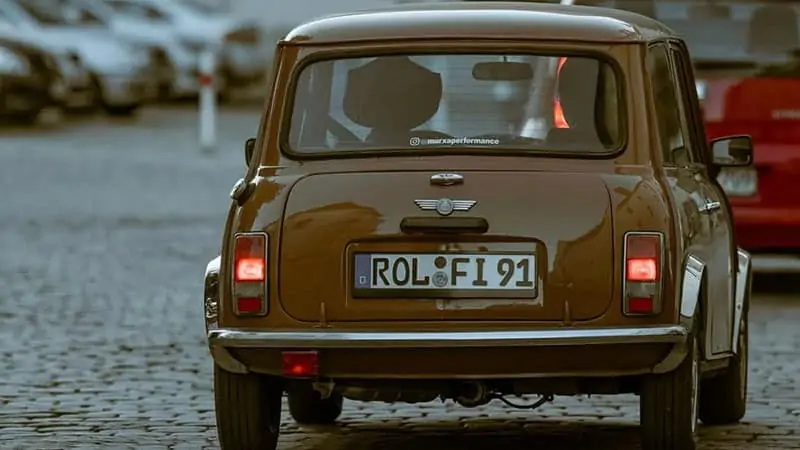The importance of efficient driving for vehicles can’t be overstressed. This technique helps to improve road safety and reduce wear on your car. Apart from that, fuel-efficient driving is also essential for reducing emissions and fuel consumption.
When it comes to driving efficiently, you can use several different techniques. For instance, accelerating gently and maintaining a steady speed are some of the most effective ways to achieve efficient driving. But here’s a burning question, is skipping gears an efficient driving technique for saving fuel?
Skipping gears is a good fuel-efficient driving technique. When done the right way, you can always save a significant amount of fuel driving your car. That said, the best way to skip gears to save fuel is to use the technique when it’s safe and appropriate.
When is the safe and appropriate time to skip gears to save fuel when driving? Which gear uses less fuel? Does skipping gears reduce fuel consumption? These and more are the frequently asked questions that I’ll be addressing in the rest of this article. So, without wasting time, let’s get straight down to business.
Which Gear Uses Less Fuel?

In manual transmission cars, gear shifting is one of the essential techniques that drivers need to take seriously. When done properly, it can help to achieve better control over the vehicle.
I’m sure you’ll agree with me that most manual transmission vehicles have about five to six gears. Usually, there’s always one reverse gear, and four/five forward gears, including 1st gear (low), 2nd gear, 3rd gear, 4th gear, and 5th gear (overdrive).
The first gear, also called the lowest-numbered gear, is the one needed to start a car from a stationary position. It’s the gear that provides the strongest power for accelerating a vehicle.
The second gear also provides a sufficient amount of power to accelerate a vehicle. It’s a low gear but the power it supplies is lesser than that of the Ist gear. The best time to use the 2nd gear is when you’re in first but looking to achieve an increased speed. However, you can always use the 2nd gear from a stop when you’re driving downhill.
Furthermore, the 2nd gear is used to drive at a low speed – but this is usually higher than that of the 1st gear. It’s also the ideal gear for making right/left turns.
As for the 3rd gear, it’s an intermediate gear used for increasing speed when driving in first or second. Compared to the first and second gear, the third gear helps to save a certain amount of fuel when driving.
However, the 4th gear is better than the 3rd for increasing fuel economy. When you’re accelerating in third gear but are looking to go above 30 mph, it’s best to shift to fourth to save fuel and avoid disrupting the balance of your car.
The fifth gear, also called the overdrive, is the highest-numbered gear in a manual transmission car. If you’re already in fourth gear and are looking to achieve an increased speed, let’s say above 40 mph, the ideal gear to shift to is the overdrive.
While the fifth gear is perfect for achieving a speed of 40 mph and more, it’s worth noting that the gear is only good for open roads and dual carriageways. Furthermore, driving at the highest gear, which is the overdrive, will help you achieve an increase in fuel economy.
Now, let’s go to the question of which gear uses less fuel? It’s pretty simple; the overdrive is the gear that utilizes less fuel. However, you need to be very careful when switching to 5th gear. Be sure it’s safe before running your car in fifth.
Furthermore, it’s worth knowing that the low gears can also use less fuel. However, you’ll only be able to achieve that when you stay long using any of them. Unfortunately, this move is not advisable for any driver – driving and staying long in lower gears could hurt your vehicle.
Does Skipping Gears Save Fuel?

The simple and direct answer to the question is yes; skipping gears can always help you save a significant amount of fuel in your vehicle. However, be sure to do it the right way to avoid causing problems for the car.
Many people often say that skipping gears is dangerous and could hurt a manual car. Of course, that’s true but not in all cases. There are a couple of ways to skip gears without upsetting the balance of the car or wearing out the clutch.
For instance, let’s say you’re in second gear and need to shift to fifth. This move will, no doubt, help you save a sufficient amount of fuel when driving on open roads or dual carriageways. However, you could hurt your car if you don’t upshift the right way. The right way to do that is to press the clutch in and wait until the rev drops and match that of the fifth gear position. After that, release the clutch and you’ll be able to achieve a smooth transitioning from the 2nd to the 5th gear.
That said, the bottom line is that skipping gears can always help you save a significant amount of fuel – if done the right way.
Why Does Skipping Gears Reduce Fuel Consumption?
As you already know, skipping gears can always help to reduce fuel consumption. How is that possible? Why does skipping gears increase fuel economy?
It’s pretty simple; when you skip gears effectively and upshift, you’ll achieve an increase in speed. What that means is that you’ll be able to reduce the amount of time it takes to accelerate – this is an efficient driving technique for saving fuel consumption.

